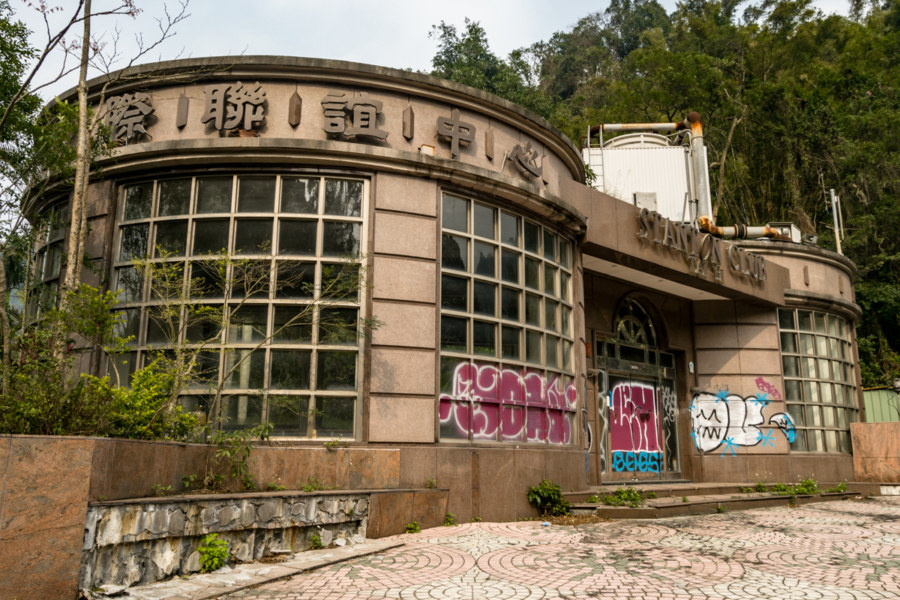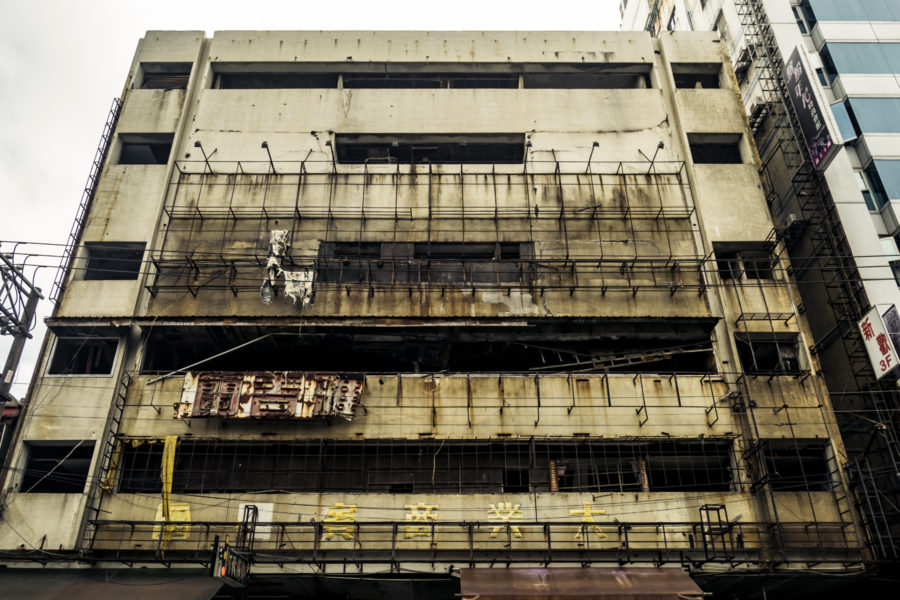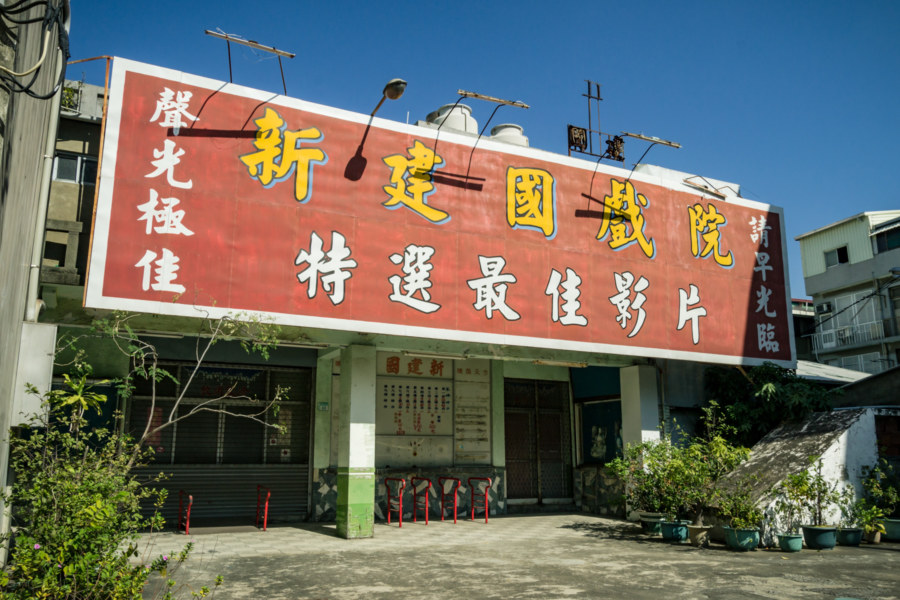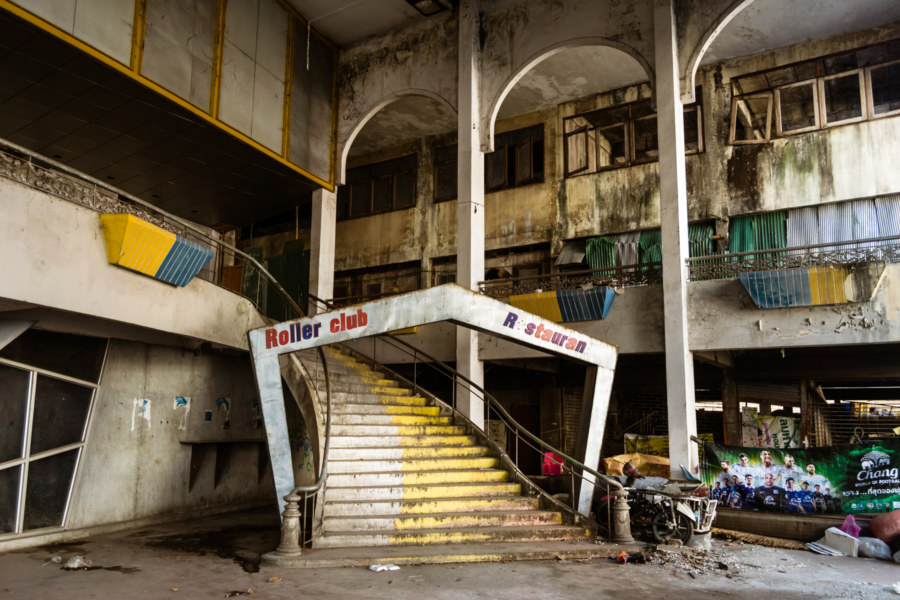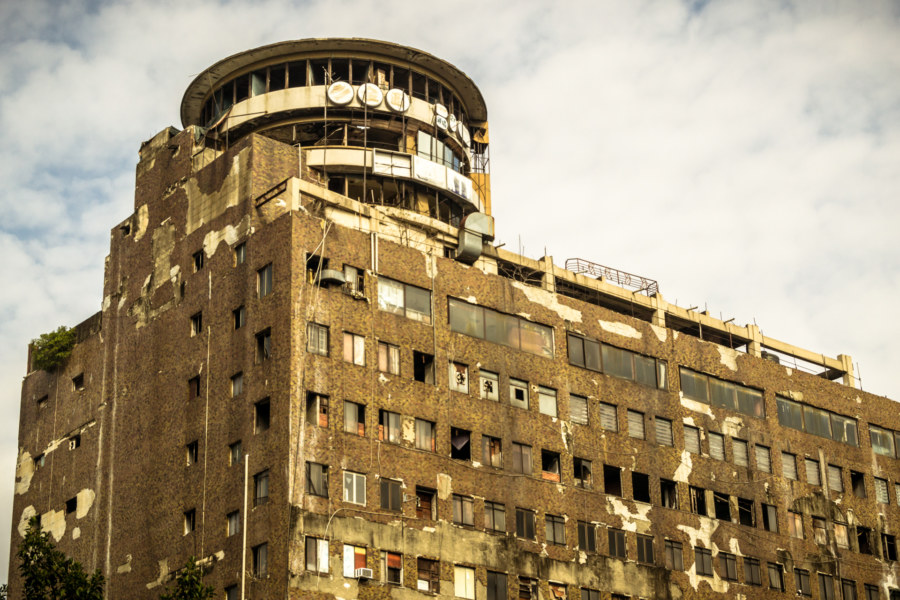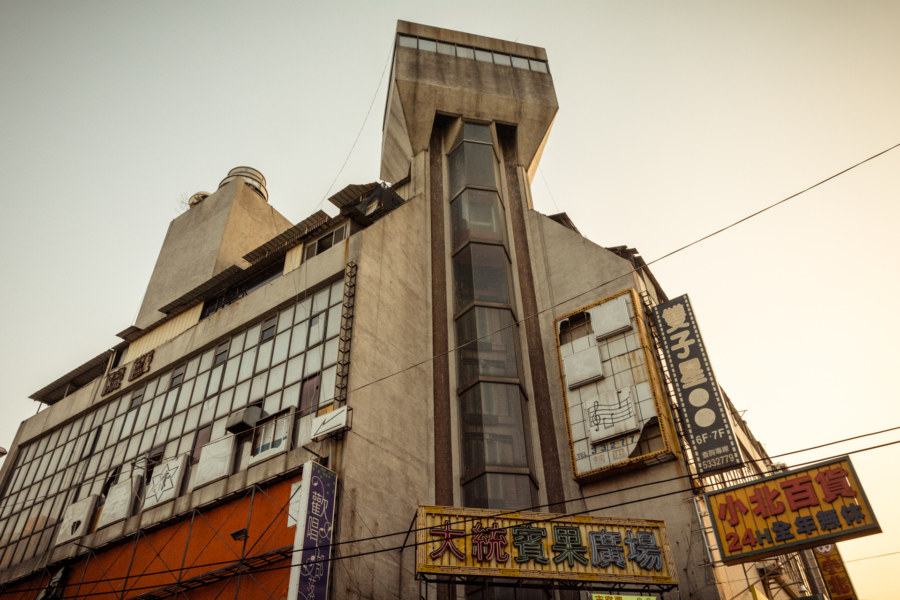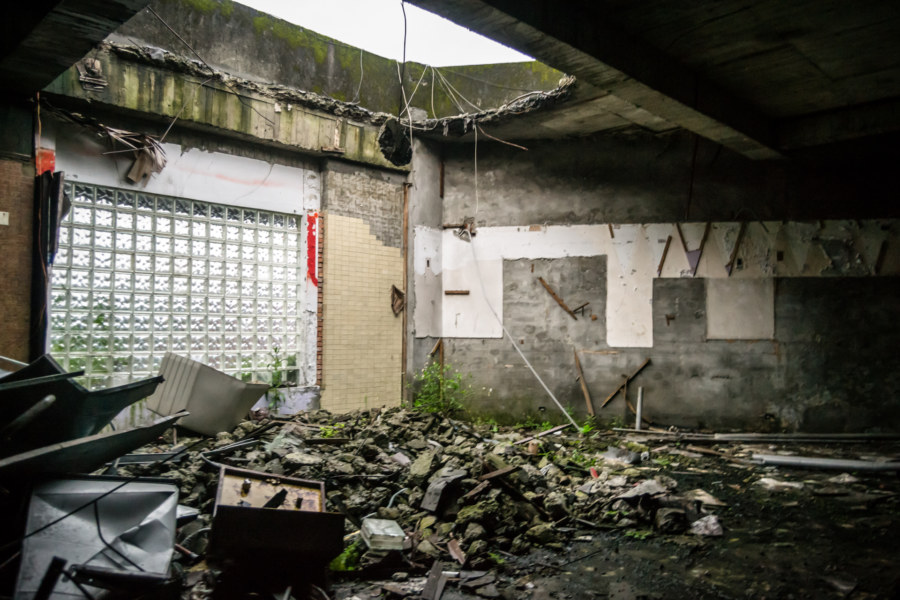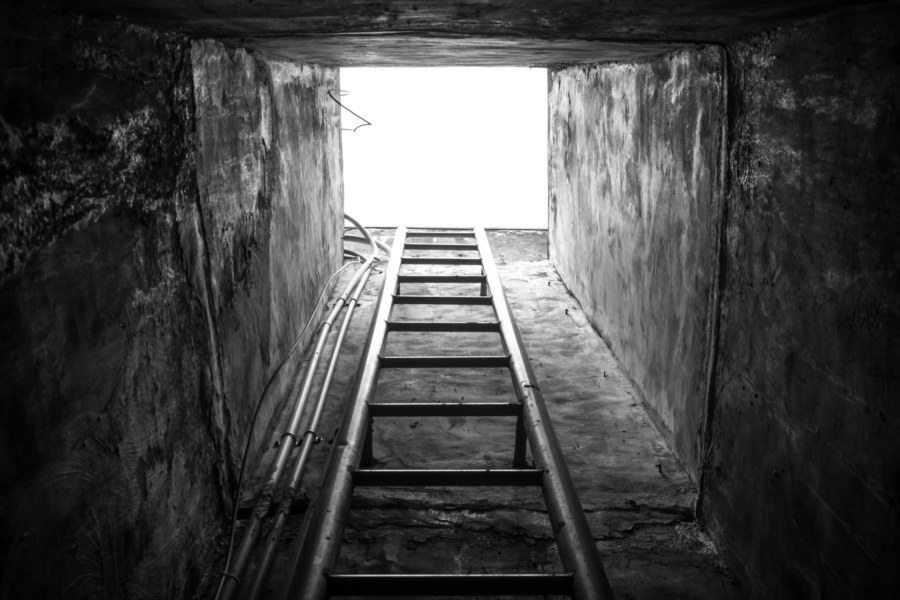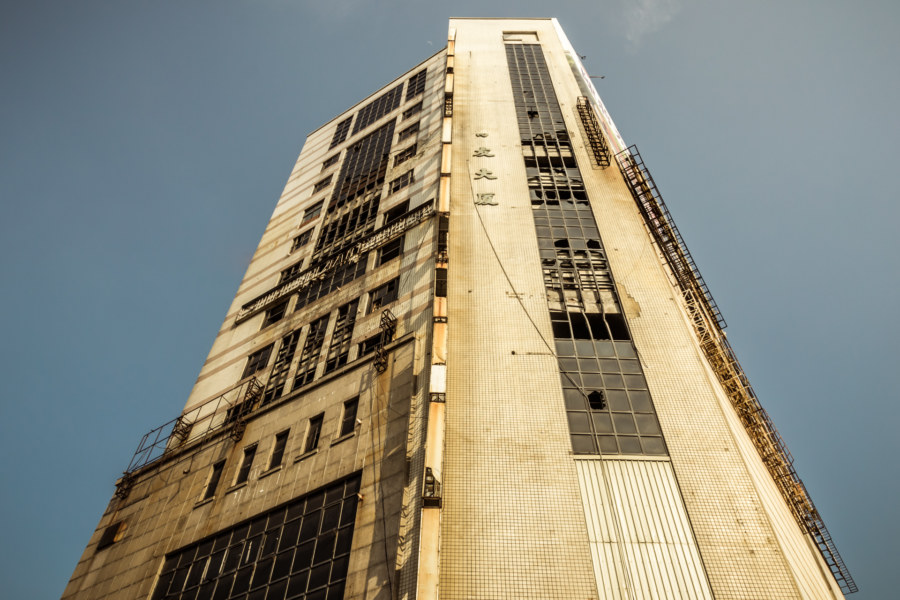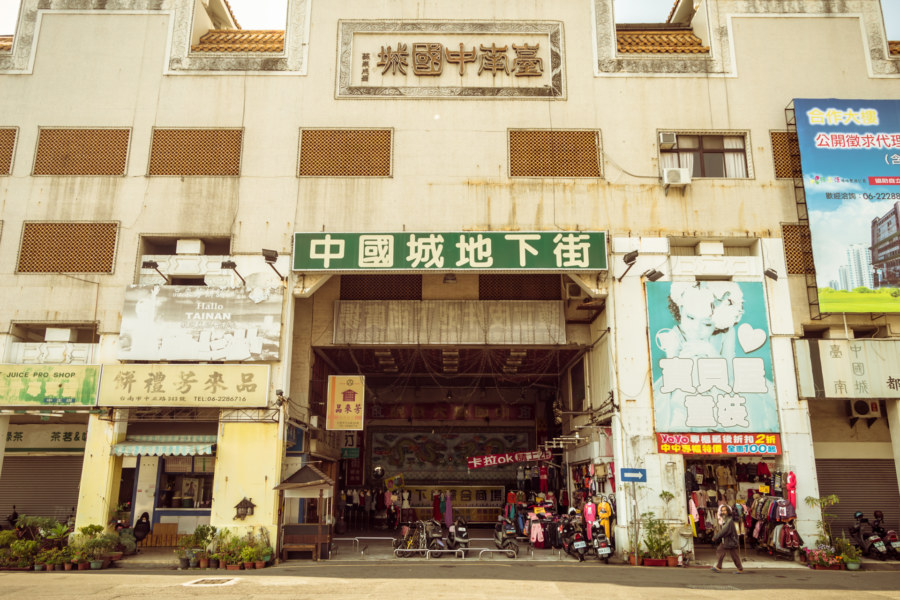The Stanton Club (飛宏象山國際會議聯誼中心) was an exclusive business and recreation facility located in the foothills of the Nangang Mountains in Xinyi, Taipei. Although details are scant, it was in operation from the late 1990s until approximately 2005, when it went out of business for reasons unknown. Most of the club is underground—and with floorspace or around 3,500 ping, a Taiwanese unit of measurement corresponding to approximately 12,000m2, it was a rather large place. Perhaps owing to its relatively accessible location this became one of the most notorious ruins in Taipei for awhile, even appearing on television at times. The space was finally leased and renovated in 2018 so I am now at liberty to share some photos from several forays made to the site in previous years.
Bowling alleys, movie theaters, karaoke bars, arcades, and the like.
Adjacent Terms
Guobin Commercial Building 國賓商業大樓
Guóbīn Commercial Building 國賓商業大樓 is an ugly ruin in the heart of Zhongli, a city of around half a million people in Taoyuan, Taiwan. Built at the dawn of the booming 1980s, it was home to a variety of entertainment businesses over the years, and appears to have been mostly abandoned sometime around the turn of the millennium. Much to my surprise I’ve not found much about this place online, which suggests whatever newsworthy calamities befell this derelict commercial building predate the era of digital journalism. Without any sources to draw upon I can only make some educated guesses about what I captured during a brief visit in the early days of 2017.
Tainan Xinjianguo Theater 台南新建國戲院
One of the last of the many vintage theaters of Tainan seems to have finally closed its doors. Founded in 1964, the notorious Xīnjiànguó Theater 新建國戲院 was originally named for its location on Jianguo Road 建國路, which was later renamed Mínquán Road 民權路. It is not uncommon for old theaters in Taiwan to resort to showing pornography in the twilight of their decline but this particular theater appears to have specialized in more carnal forms of entertainment for much of its history. Perhaps this is why this theater remained in business until very recently—long after most of the nation’s hundreds of other standalone theaters shut down in the late 1990s and early 2000s.
Space Roller, Chiang Mai
Space Roller is an abandoned rollerskating rink not far from the Arcade Bus Station on the northeastern outskirts of Chiang Mai, Thailand. I dropped in to check it out in January 2016 after reading about it online, possibly here, and was impressed with the scale of the place. It is big, taking up the better part of a city block, with several unfinished add-ons extending into the urban wilderness on either side. Unfortunately there isn’t a lot of credible information about Space Roller in English so this post will consist primarily of photos of what I found in about half an hour of slinking through the shadows.
Qianyue Building 千越大樓
The Qiānyuè Building 千越大樓 is one of the most recognizable ruins in central Taiwan. Located only a short distance from Taichung Station 台中車站, it is impossible to miss if you bother to look up at some point while walking deeper into the city. This mixed-use commercial and residential high-rise was originally built in the 1970s and, thanks to its location at the very heart of the famous Taichung Electronics Street 台中電子街商圈, reached its apex during the consumer electronics boom of the late 1980s and early 1990s.
Douliumen Building 斗六門大樓
While living down in Changhua City last winter I made occasional forays up and down the TRA Western Line 西部幹線 to scope out places not commonly written about in English. One such place is Douliu, the administrative seat of Yunlin, which hardly earns more than a passing mention in the English language blogosphere. It was a worthwhile trip too—apart from the famous Tàipíng Old Street 太平老街 and the surprisingly large and lively Douliu Night Market 斗六夜市 I also chanced upon another abandoned entertainment complex, the Dòuliùmén Building 斗六門大樓, named after an archaic term for the city dating back to the 17th century. This building was also once home to the Shuāngzǐxīng or Gemini Theater 雙子星戲院.
Tongyi Bowling Alley 統一保齡球館
Keelung, like many cities in Taiwan, is a dark wonderland for urban exploration. You can hardly turn around without sighting yet another hulking ruin calling out to be entered. Most of these buildings are so decrepit that little remains to indicate what its purpose once was—a direct consequence of Keelung’s incessant rain and gloom. The process of decay works at a feverish pace in this grim port city, rapidly eroding evidence of human occupation in any abandonment exposed to the elements.
Qiaoyou Building Supplemental
Recently I posted my full exploration of the Qiaoyou Building 喬友大廈, a towering ruin in the heart of Changhua City. It was a big building and I ended up capturing many more photographs than I ended up sharing there. Here, in this post, I’d like to share a few more photos I captured in black and white. I have also included a couple of images demonstrating how I digitally restore photographic negatives I find in the ruins (a technique discussed in more detail here). If you’re curious about this building be sure to see the original post.
Qiaoyou Building 喬友大廈
I have been living next to the magnificent ruins of the Qiáoyǒu Building 喬友大廈 in Changhua City for the last several months. Not a day goes by where I’m not walking or riding by this hulking derelict, looking up and wondering about what I might find inside. I had some general idea, of course, as I already recognized the building for what it was: one of many shopping and entertainment complexes built in central Taiwan during the economic boom of the late 1970s and early 1980s. Most of these former showpiece properties have been abandoned in the decades since, usually due to some combination of mismanagement, declining fortunes, and fire damage.
Tainan Chinatown 臺南中國城
Tainan Chinatown 臺南中國城 is a half-abandoned and soon to be demolished shopping mall and entertainment complex in Tainan City. Built in 1983, it was designed by C.Y. Lee, a famous architect who later directed the construction of 85 Sky Tower and Taipei 101. I went by to shoot a few photos with some friends one sunny afternoon in January 2014 so I figure I may as well share them here.
